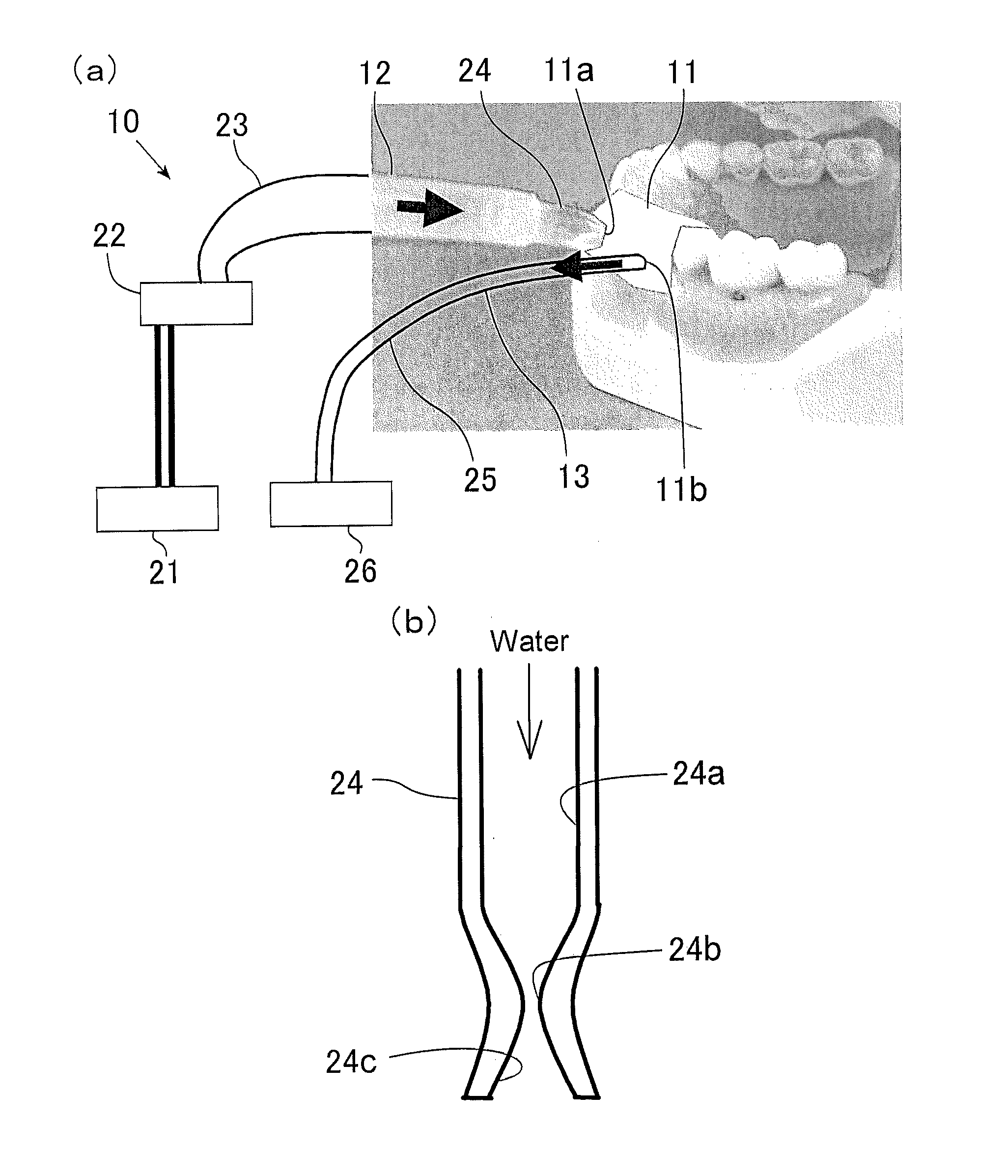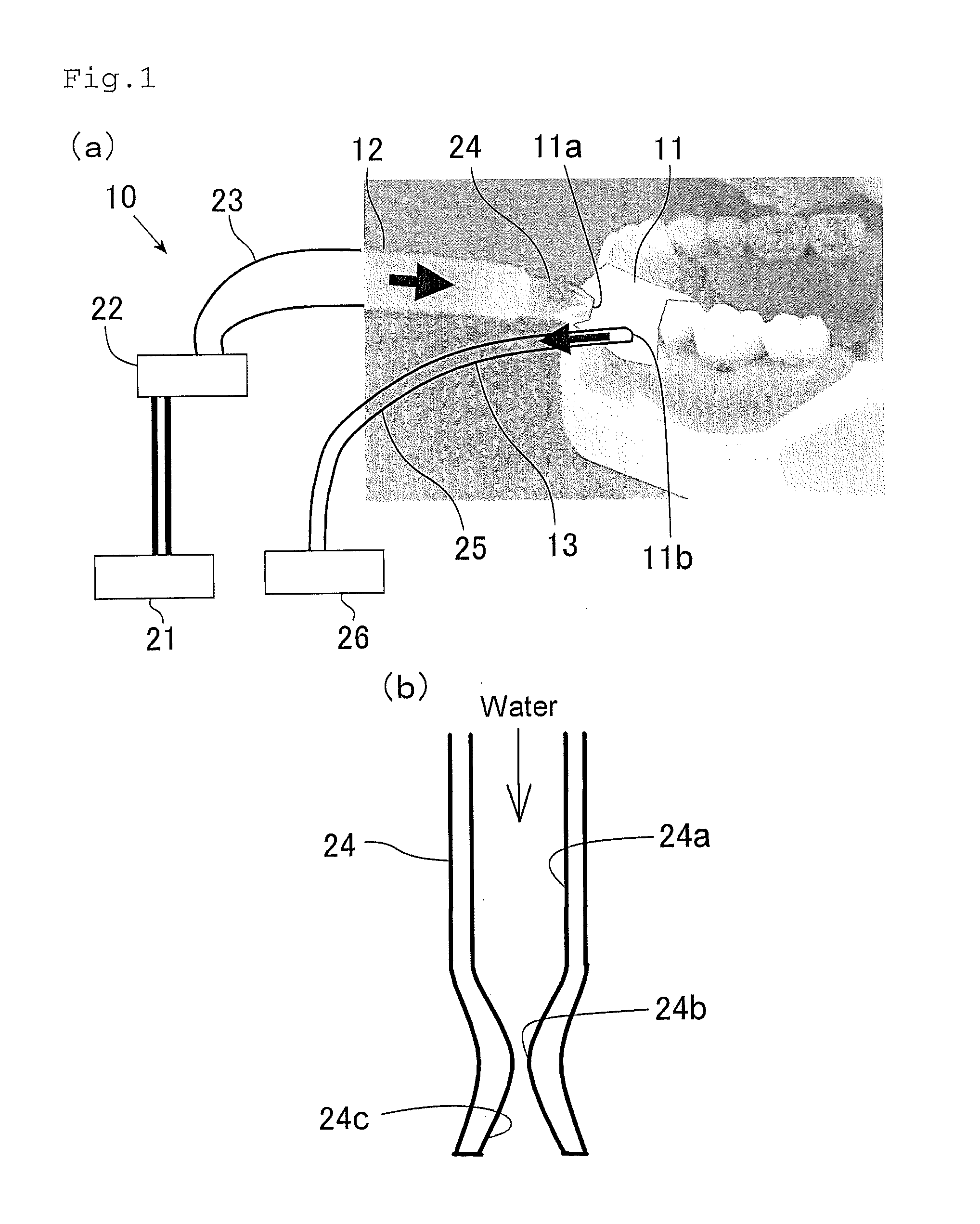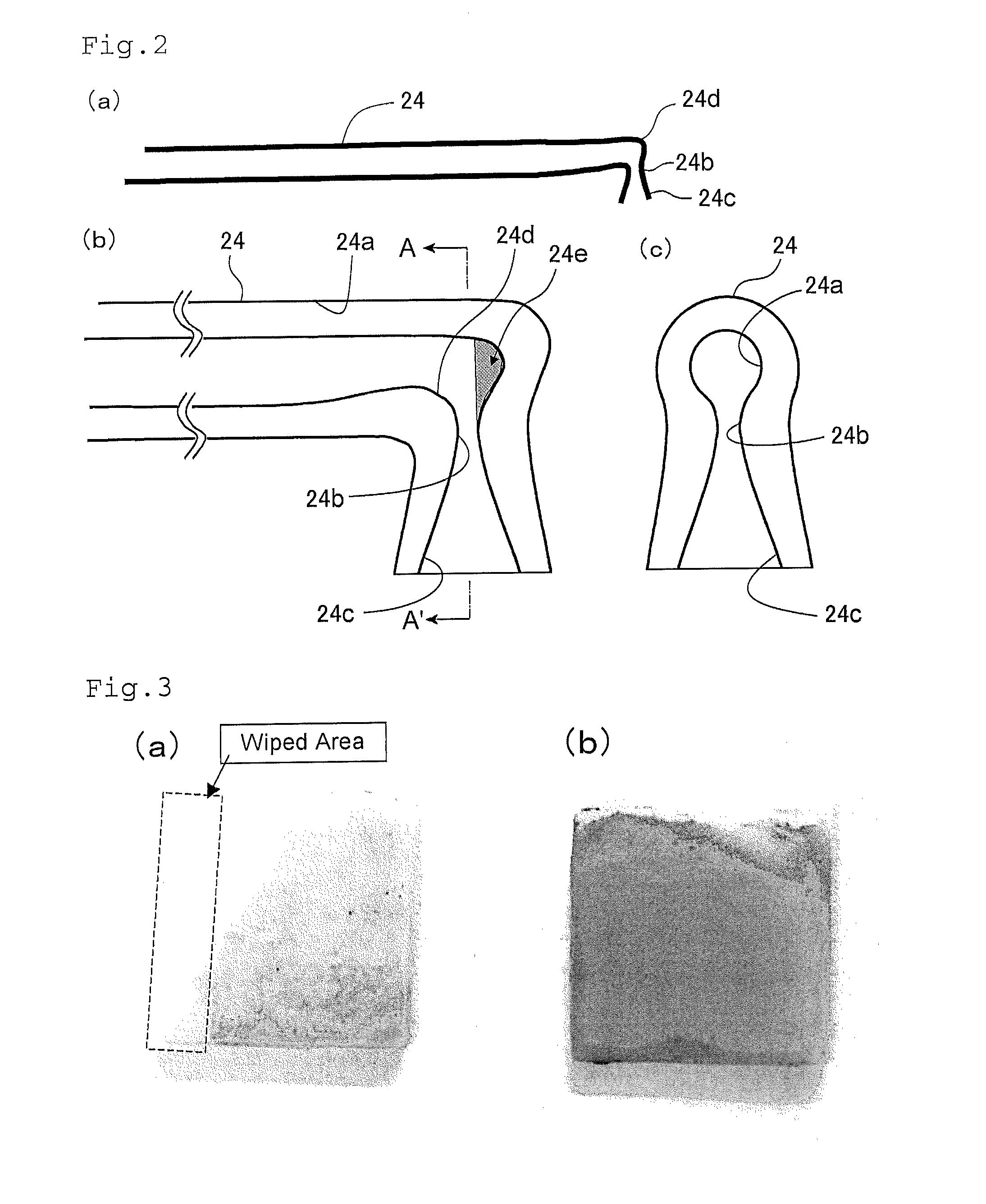Device for cleaning oral cavity and method for cleaning oral cavity
a technology for which is applied in the field of cleaning oral cavity and cleaning method, can solve the problems of difficult to remove plaque, easy inducing periodontal disease, and insufficient prevention of periodontal disease such as toothbrushing and the lik
- Summary
- Abstract
- Description
- Claims
- Application Information
AI Technical Summary
Benefits of technology
Problems solved by technology
Method used
Image
Examples
example 1
[0045]To verify a cleaning effect according to the device 10 for cleaning oral cavity and the method for cleaning oral cavity of the embodiment of the present invention, the surface of a dental photocurable resin was coated with a dental paint for confirming a dental bite, and then this paint was cleaned. The inner diameter of the small diameter part 24b of the venturi tube 24 was set to be 0.5 mm and the jetting pressure was set to be 0.5 MPa to clean the paint. A state of coating the dental paint on the surface of the dental photocurable resin, a result obtained by cleaning, via scanning for several minutes, the entire surface of the dental photocurable resin, and a result obtained by jetting onto a fixed cleaning location for 10 seconds are illustrated in FIG. 3B, FIG. 3A, and FIG. 4A, respectively. Further, for comparison, a result obtained by jetting onto a fixed cleaning location for 10 seconds using a water jet having a nozzle diameter of 0.5 mm at a jetting pressure of 0.5 M...
example 2
[0047]An experiment for examining an optimum shape of the venturi tube 24 was conducted. As illustrated in FIG. 5, to examine an optimum length λ of the enlarged part 24c relative to the inner diameter d of the small diameter part 24b, cavitation bubbles generated from the venturi tube 24 were jetted onto a polymer piezoelectric film sensor formed of a PVDF (polyvinylidene fluoride) sensor to measure cavitation impact force energy using a cavitation impact counter.
[0048]Under conditions of a jetting pressure p1=0.5 MPa, a diameter d of the small diameter part 24b=0.5 mm, and a stand-off distance s from the tip of the venturi tube 24 to the PVDF sensor=0.5 mm, the length λ of the enlarged part 24c was set to be 5, 6, 7, and 8 mm to measure the magnitude (threshold value Fth) of a cavitation impact force and the occurrence frequency of an impact force being at least the threshold value Fth. These results are illustrated in FIG. 6. As illustrated in FIG. 6, the results clearly confirme...
example 3
[0051]To verify a cleaning effect according to the device 10 for cleaning oral cavity and the method for cleaning oral cavity of the embodiment of the present invention, plaque (tartar) adhering to a tooth of the lower jaw of a minipig kept in a freezer was cleaned. The inner diameter of the small diameter part 24b of the venturi tube 24, the jetting pressure, and the stand-off distance were set to be 0.5 mm, 0.5 MPa, and 2 mm, respectively. A state of a tooth prior to cleaning and a state of the tooth after cleaning for 5 minutes are illustrated in FIG. 8A and FIG. 8B, respectively. Further, in another location, a state of a tooth prior to cleaning, a state of the tooth after cleaning for 1 minute, and a state of the tooth after cleaning for 3 minutes are illustrated in FIG. 8C, FIG. 8D, and FIG. 8E, respectively.
[0052]As illustrated in FIG. 8, cleaning for 1 to 5 minutes was able to well clean the plaque (tartar) adhering to the tooth, and the cleaning effect according to the devi...
PUM
 Login to View More
Login to View More Abstract
Description
Claims
Application Information
 Login to View More
Login to View More - R&D
- Intellectual Property
- Life Sciences
- Materials
- Tech Scout
- Unparalleled Data Quality
- Higher Quality Content
- 60% Fewer Hallucinations
Browse by: Latest US Patents, China's latest patents, Technical Efficacy Thesaurus, Application Domain, Technology Topic, Popular Technical Reports.
© 2025 PatSnap. All rights reserved.Legal|Privacy policy|Modern Slavery Act Transparency Statement|Sitemap|About US| Contact US: help@patsnap.com



